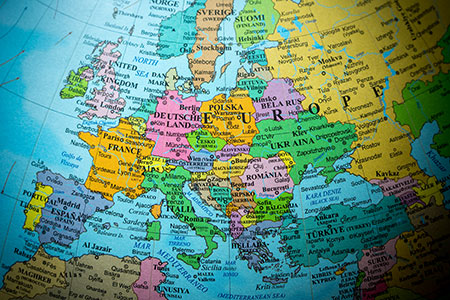
Europe’s history of solar energy is long and complicated. Seen by many as the de-facto birthplace of the solar energy movement, the continent has seen its dominance fade over the past 15 years.
Unfortunately, as we are seeing very clearly right now, as Europe’s solar photovoltaics (PV) production capacity faded, so too did its energy security. An unexpected Russian invasion of Ukraine was enough to throw the continent’s energy markets into a state of disarray. It is hard to argue that policy decisions were not behind what ultimately led to an overreliance on Russian oil and gas, especially when looking at the data around Europe’s solar industry, which point to a clear breakdown at the start of the last decade.
One of the central triggers for Europe’s energy woes is this over-reliance on Russian oil and gas. A central point of failure, depending on a country run by an unchecked leader, does that sound familiar? Although the scale of this risk is significant, it seems that it is often not given the proper attention. A crusade against the Chinese solar industry is not what is being suggested – instead, aiming for more well-rounded regional solar industries should be a goal not only in Europe, but for regions around the world.
Thankfully, there is not only a growth in annual installed capacity, but the industry just might be seeing the beginning of a reinvigorated European solar manufacturing industry. Just this past month, Italian utility giant, Enel, announced they would be expanding their 3Sun solar panel factory in Sicily to an impressive 3 GW per year. This will represent the first solar gigafactory in Europe, and serve as a proof of concept for producing technologically advanced panels that can compete on both a cost and performance basis.
Thankfully, this is not the only ambitious solar manufacturing project unfolding on the continent. Spanish energy giant, Iberadrola, just announced that it intends to partner with Exiom Solution to construct a solar module factory in Langreo, Spain. Although exact capacity details have not yet been released, the company has said that it will be one of Europe’s first ‘industrial scale’ solar factories.
Of Course manufacturing is only part of the recipe, but, looking at the past several years, it can be surmised that the build out of Europe’s own solar PV factories represent the second shoe dropping.
PV installations in 2022 were the highest on record in Europe, reaching 41.4 GW on the continent – an impressive 47% increase over 2021. The desire to build more panels and move to an ever more sustainable energy system is clearly there. Although there is still a considerable gap, hopefully Europe’s manufacturing figures will soon start to come more in line with its installation numbers.
But what effect would this have on Europe’s energy markets? Well for one, it would go a long way towards giving the continent far more energy security. Europe has already made the mistake of hinging its energy system on a single point of failure once before, and feeling the effects of it are being felt right now. A more integrated solar PV system, featuring a fully domestic value chain, would insulate the continent from outside events and make it far more resilient – and that is only one of many benefits.
Not only would a more developed European solar industry be more sustainable than one that still relies heavily on fossil fuels, but it would also be far more sustainable than continuing to source panels from abroad. Cutting out the considerable emissions from shipping panels halfway around the world should not be discounted. In fact, when accounting for more of the value chain coming back home, the emission savings can actually be quite substantial.
In the end, there are countless benefits to Europe reestablishing its once world class solar manufacturing industry. The resulting tighter integration that can be achieved as an industry can assist in enabling a faster and wider rollout across Europe, helping not only to decarbonise the end energy supply, but the entire connected value chain.
This Winter has been an eye opener in terms of understanding the long-term needs, and constraints of Europe’s energy system. Solar provides a fantastic opportunity to build a more resilient and sustainable energy system in Europe, but it is also important to make sure the continent does not fall into a similar over-reliance issue with Asian made panels as it did with Russian oil and gas. One of the great benefits of renewable energies has always been the opportunity to decentralise and allow more regions to have autonomy over their energy sources – a reinvigorated European solar industry could do just that.
The great strides seen with European solar installations over the last several years, as well as the increasing desire to bring production back home, are great signs for the future. The tough Winter Europe is going through should push the importance of energy security even further to the forefront, and investment trends on the continent should follow. A reinvigorated European solar industry could present far reaching economic benefits on the continent – hopefully what is unfolding right now is the beginning of just that.